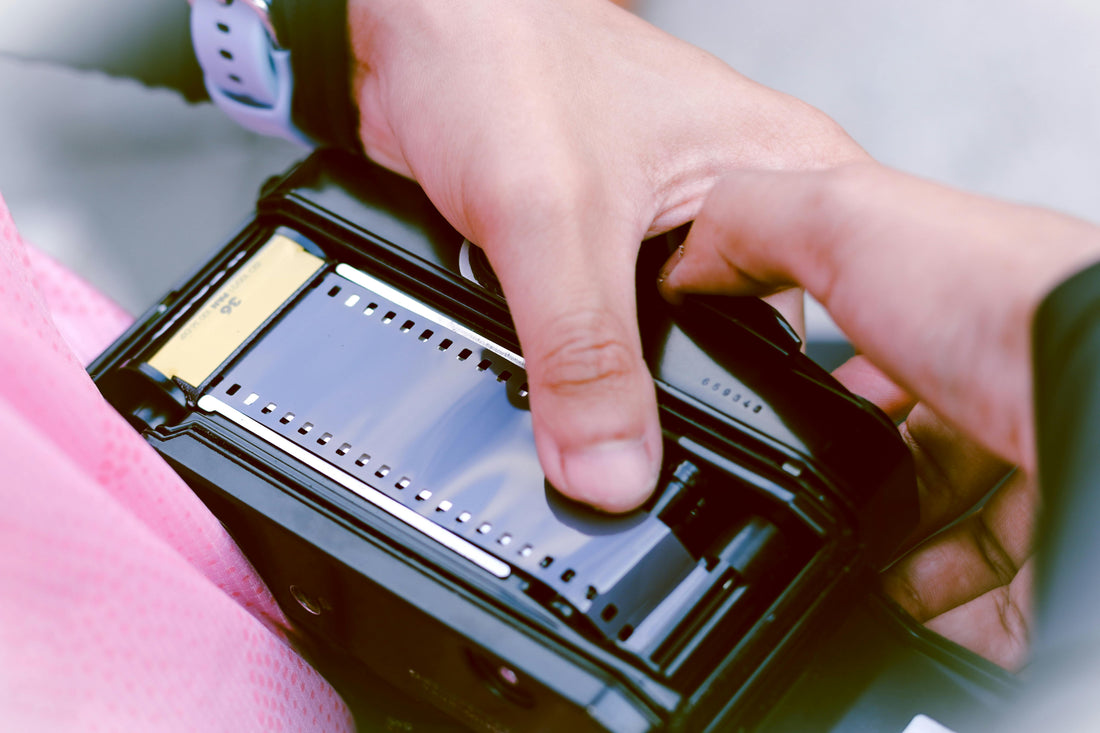
The Psychology of the Film Look: Why We Still Crave It
Share
In a world of 6K digital cameras, ultra-sharp lenses, and AI-powered editing tools, you’d think we’d be obsessed with clarity, speed, and perfection. But instead, millions of filmmakers, colorists, content creators, and photographers are trying to go backward — chasing the warm, imperfect, emotional aesthetic of film.
Why? What is it about the film look that we can’t seem to let go of? And how can we achieve it in a digital world without just slapping on a LUT?
This post explores the deep psychological and emotional reasons why we crave the film look — and how tools like Retrofi Film Emulation help recreate that magic inside DaVinci Resolve, frame by frame.
1. Film Feels Like Memory
Our relationship with film is deeply emotional, not just visual.
Think of the way you remember a childhood birthday. It's not razor-sharp. The colors are soft. The light is warm. There’s a gentle haze around the edges. That’s exactly how film looks — not because of nostalgia, but because it mimics how memory feels.
Film stocks like Kodak Portra 400, 500T, or Fuji 400H have a distinct visual softness that digital sensors don’t naturally create. These stocks roll off highlights gracefully, crush shadows with emotion, and wrap colors in subtle warmth. When you see footage that emulates those looks, your brain associates it with comfort, memory, and authenticity.
Retrofi’s PowerGrades are built around this concept — designed not just to match the color, but to reintroduce that feeling. The warmth, the grain, the halation — they’re not filters. They’re emotion triggers.
2. Imperfection = Authenticity
Digital cameras today are built for precision. They capture sharp, clean, noise-free images that are technically flawless. But technical perfection isn’t emotional.
The film aesthetic is full of imperfections:
-
Grain that adds texture
-
Halation that causes glowing around light sources
-
Slight inconsistencies in exposure
-
Color shifts from real-world lighting and chemistry
These flaws give footage personality. They invite the viewer into a world that feels real, lived-in, and human. That’s why films like Lady Bird, The Grand Budapest Hotel, or Moonlight resonate emotionally — they look more like life as we experience it, not how a sensor sees it.
Retrofi was created to bring that analog imperfection back to digital workflows. With modular nodes for grain, glow, halation, color rolloff, and more, Retrofi makes digital footage feel like it was touched by light and time — not just data.
3. Film Demands Intention
Shooting on actual film is slow. Every shot counts. You don’t roll endlessly. You don’t “fix it in post.” There’s no checking the monitor 100 times. Every frame is an investment.
That intentionality carries weight — and it shows.
The film look isn’t just aesthetic. It’s a reflection of deliberate craft. When filmmakers emulate film today, they're also emulating that mindset:
-
24fps instead of 60fps
-
180° shutter for proper motion blur
-
Manual white balance and locked exposure
-
Use of ND filters, vintage lenses, and diffusion
This approach changes the way we shoot — and that changes the feel of the footage. At Retrofi, we always emphasize shooting for the grade. Our PowerGrades work best when the footage is captured with care — using light, movement, and exposure that complements the analog vibe.
4. Texture Connects Us
Texture is an often overlooked but critical part of visual storytelling. Digital footage tends to be too clean — smooth gradients, no noise, sterile clarity.
But our brains crave texture. It's how we process visual depth.
Film adds:
-
Organic grain that dances subtly over the image
-
Halation that creates soft bloom around high-contrast edges
-
Soft highlight rolloff that doesn’t clip or crush
-
A slightly chaotic “liveness” that makes every frame feel unique
This is where Retrofi shines. Unlike a LUT, which applies a one-size-fits-all curve, Retrofi’s PowerGrades layer grain at a chosen density and resolution (16mm, 35mm, expired), simulate highlight bloom, and allow you to control glow, halation, and contrast like film itself.
It’s not just about looking good — it’s about feeling textured, connected, and cinematic.
5. The Film Look Signals Storytelling
When we see the film look — in movies, commercials, or even social media — our brains instantly shift into story mode. It’s a cultural cue we’ve internalized over a century.
We expect:
-
Emotion
-
Character
-
Arc
-
Intention
That’s why even a 10-second Instagram Reel shot and graded with a Retrofi Portra 400 or Expired 16mm PowerGrade can suddenly feel like a short film. The aesthetic itself sets expectations. It elevates the content.
Digital is often mistaken for reality. Film is mistaken for art.
And that difference is exactly why creators keep coming back to emulation — to make everyday footage feel cinematic.
6. Nostalgia in the Algorithm
Let’s talk numbers. Social platforms today reward emotional engagement. And few things drive emotional reaction faster than nostalgia.
Creators using film-inspired looks — with pastel tones, warm grain, vintage flares — often see higher interaction, better saves, and longer view times. Why? Because people linger on things that feel familiar and safe.
Retrofi was built with this in mind. Whether you're grading a music video, a YouTube short, or a wedding film, the right film look can amplify mood, narrative, and even engagement.
Popular packs like:
-
Portra 400 (soft and nostalgic)
-
500T (gritty, rich in low light)
-
AGFA Ultra (bold and punchy)
-
Teal & Orange (blockbuster-inspired contrast)
…each speak to different emotional tones — and help you craft visuals that hit harder and stay longer in people’s memory.
7. Film Isn’t Just a Look — It’s a Language
The film aesthetic has become a visual language we all understand:
-
Portra 400 = nostalgia and softness
-
500T = city lights and grit
-
Expired 16mm = chaos and mood
-
Fuji = romance and softness
-
Teal & Orange = energy and drama
Each palette communicates a different emotional cue. As filmmakers and colorists, we use this language to guide viewers — even subconsciously.
Retrofi lets you speak that language fluently, with fully customizable PowerGrades that match mood to method — allowing you to design your own emotional grammar across projects.
8. What Retrofi Does Differently
LUTs are shortcuts. Retrofi is a toolset.
Every Retrofi PowerGrade is handcrafted with:
-
Grain nodes (customized per emulation style)
-
Halation & bloom simulation
-
Highlight rolloff that matches analog behavior
-
Soft glow with natural motion
-
Film curves that adjust tone and color in layers
-
Pre- and post-film look nodes for full control
-
No plug-ins required — just DaVinci Resolve
You’re not just applying a look. You’re recreating a film process in your timeline.
The result? Digital footage that doesn’t just imitate film — it feels like it.
Final Thoughts: Craving Film in a Digital World
We don’t miss film because it was easier or better. We miss what it stood for:
-
Intention
-
Emotion
-
Character
-
Craft
The film look isn't about being retro. It's about being real. It's about creating visuals that breathe, tell stories, and resonate with people.
At Retrofi, we’re not trying to replace film. We’re helping creators bring that same depth to their digital work — faster, cleaner, and more creatively.
So if you’ve ever watched your footage and thought, “This is good, but it doesn’t feel like anything” — now you know why.
And now, you know what to do.
Try Retrofi Film Emulation
🎞️ Shop the full Retrofi collection:
Retrofi Film Emulation Packs
🔥 Bestsellers:
-
Retrofi Original Pack (Kodak 500T, 250D, Portra, AGFA)
-
Teal & Orange Film Look (16/35mm + Expired)
-
Film Burn Transitions + SFX Pack
🧠 Want to learn how to shoot for the film look?
Read: (How to Get the Film Look In Camera (Before You Even Touch Retrofi))
